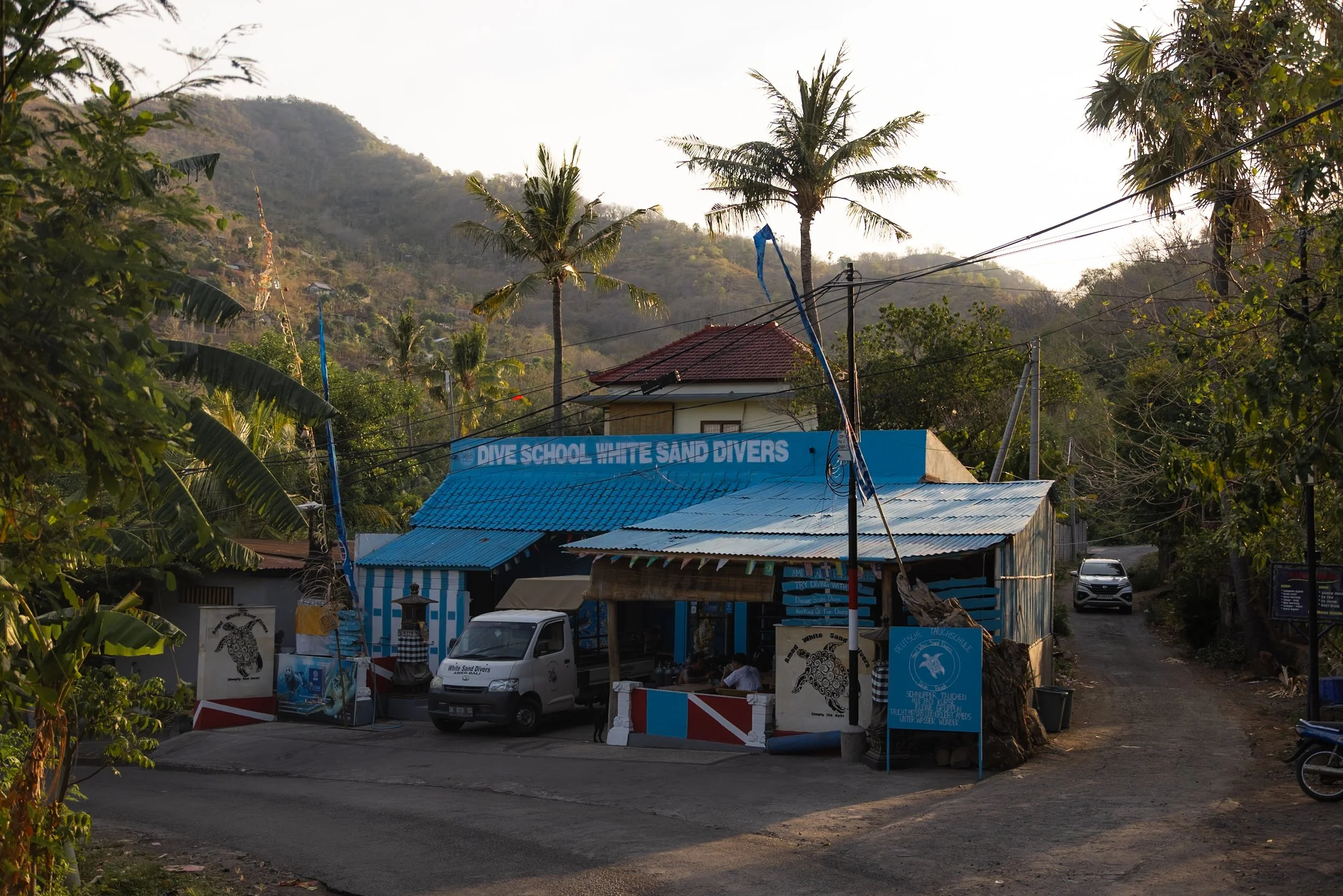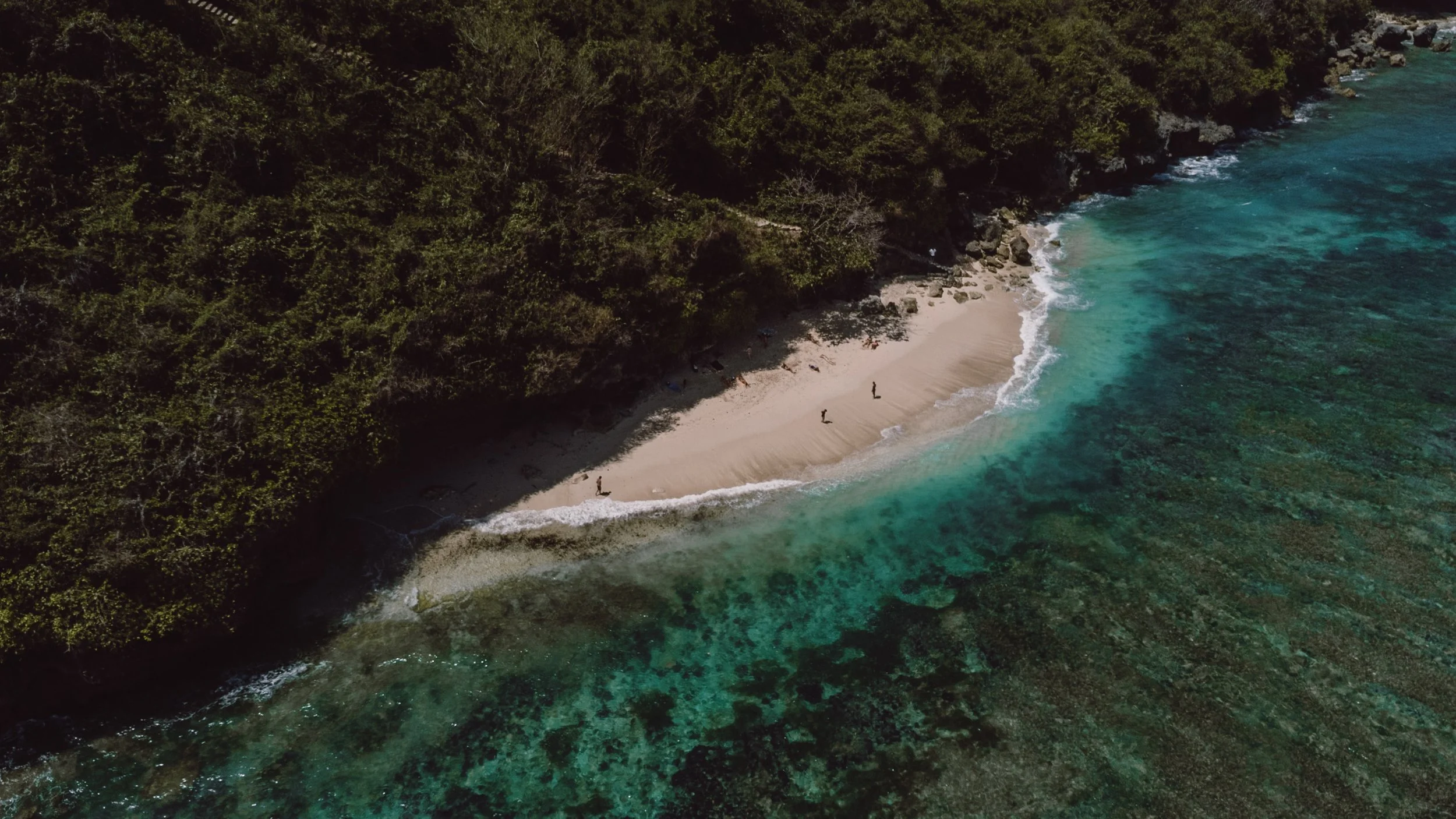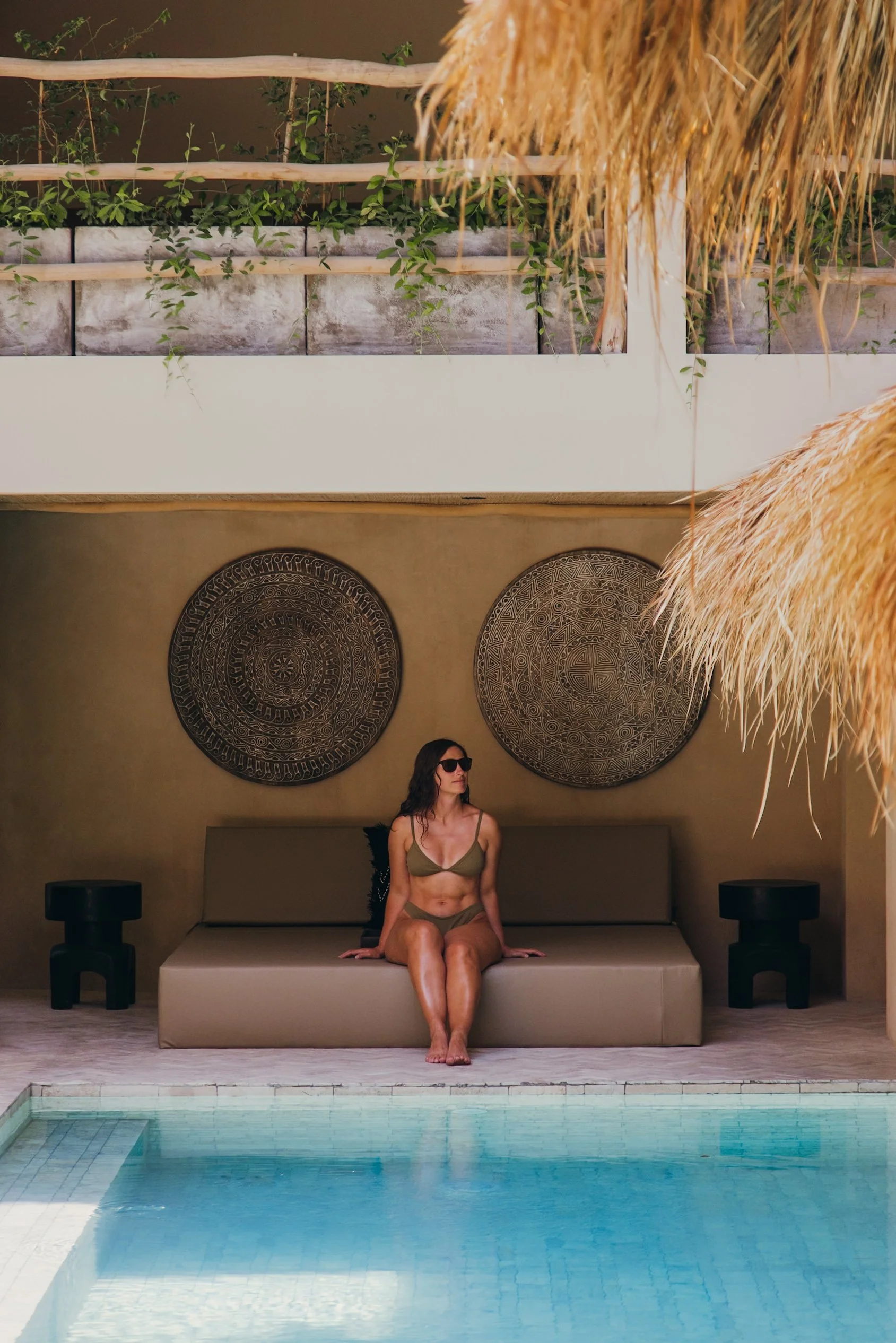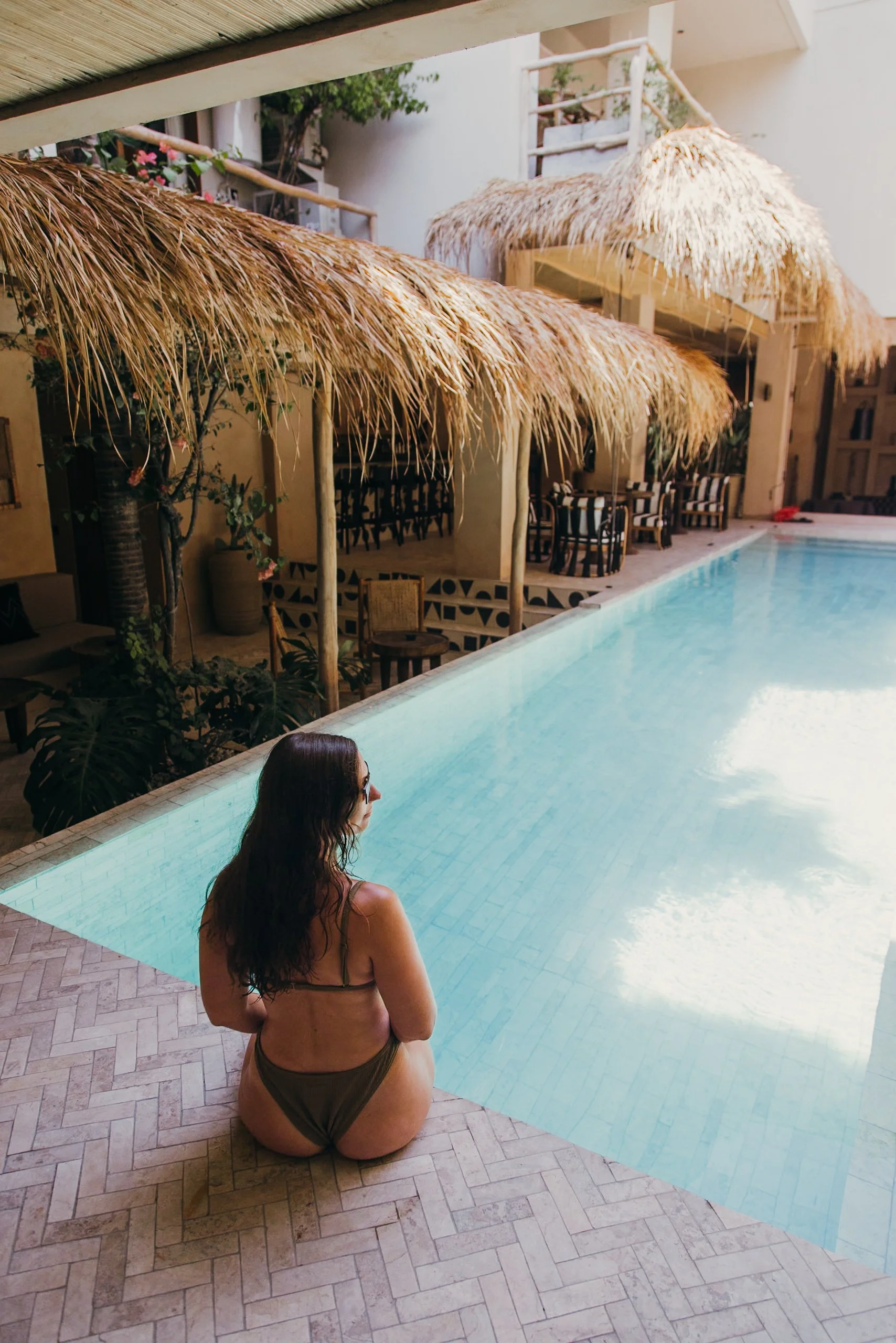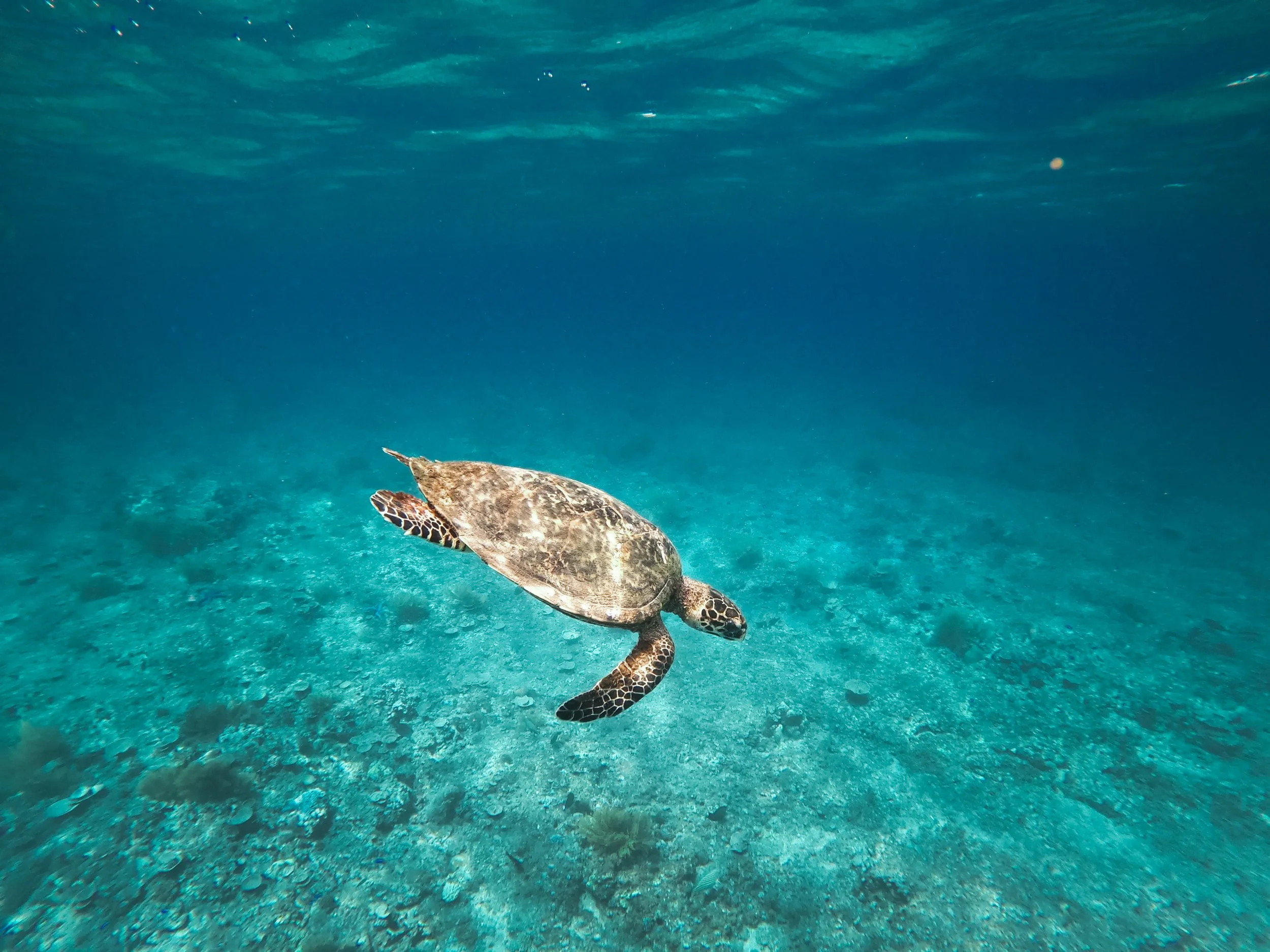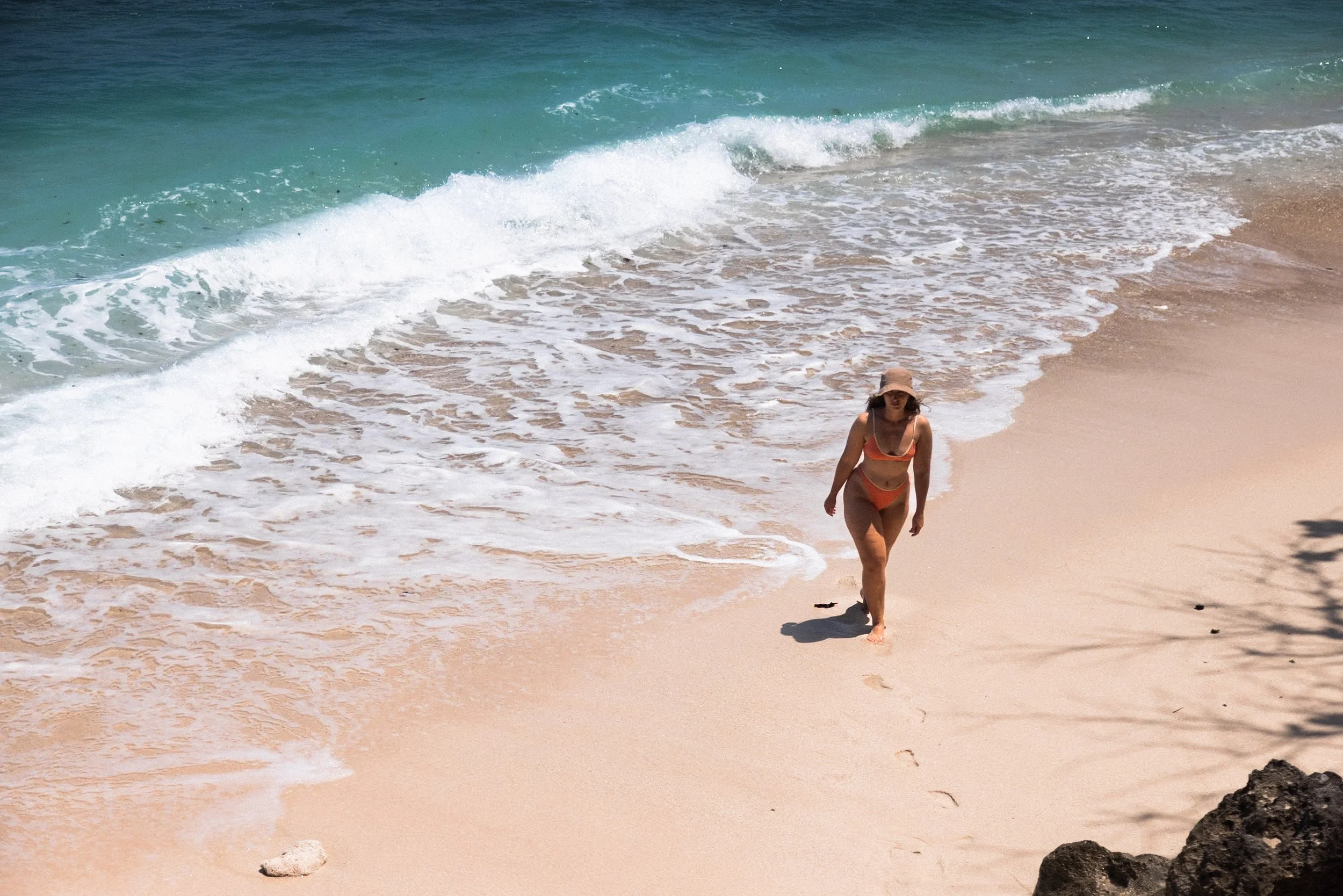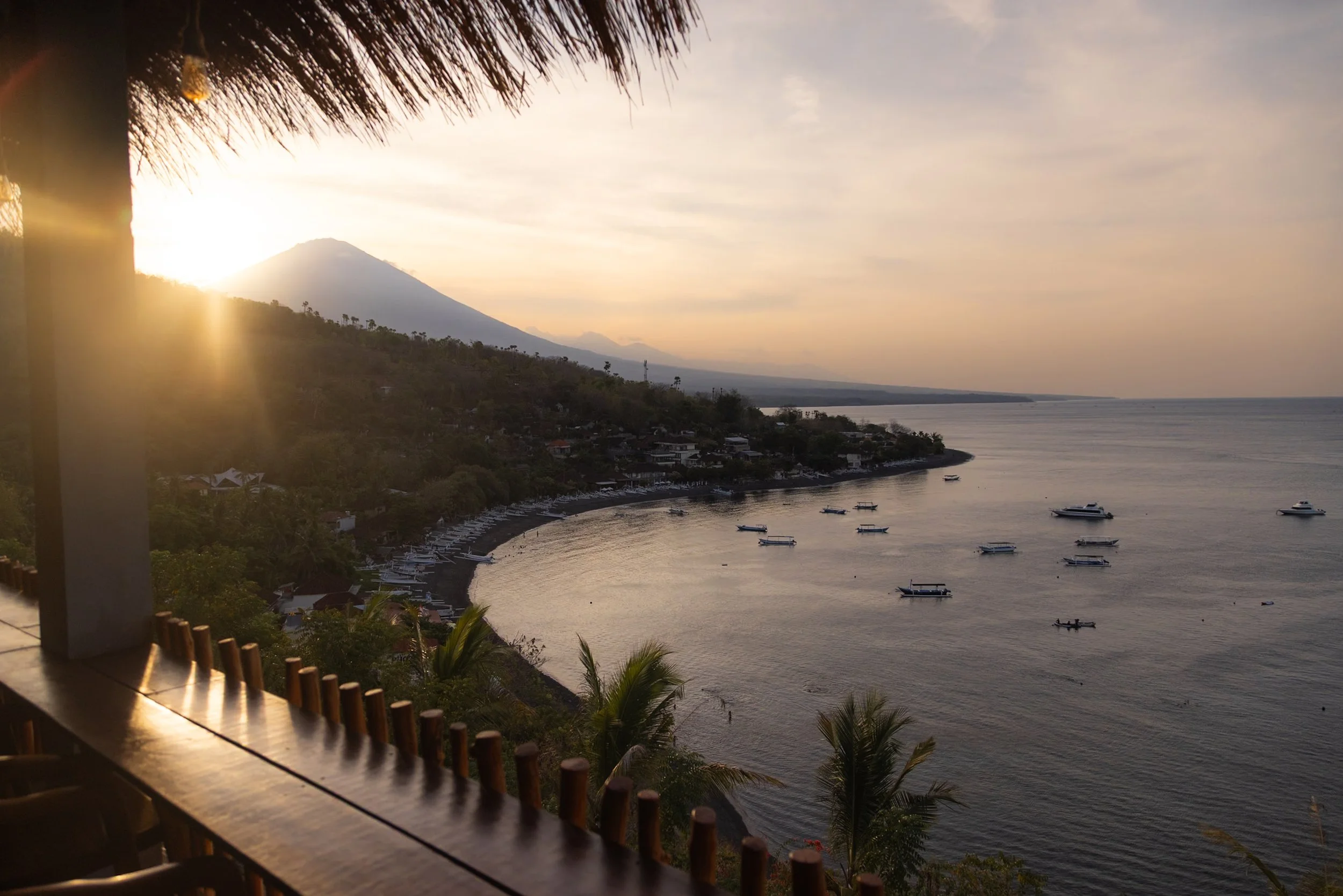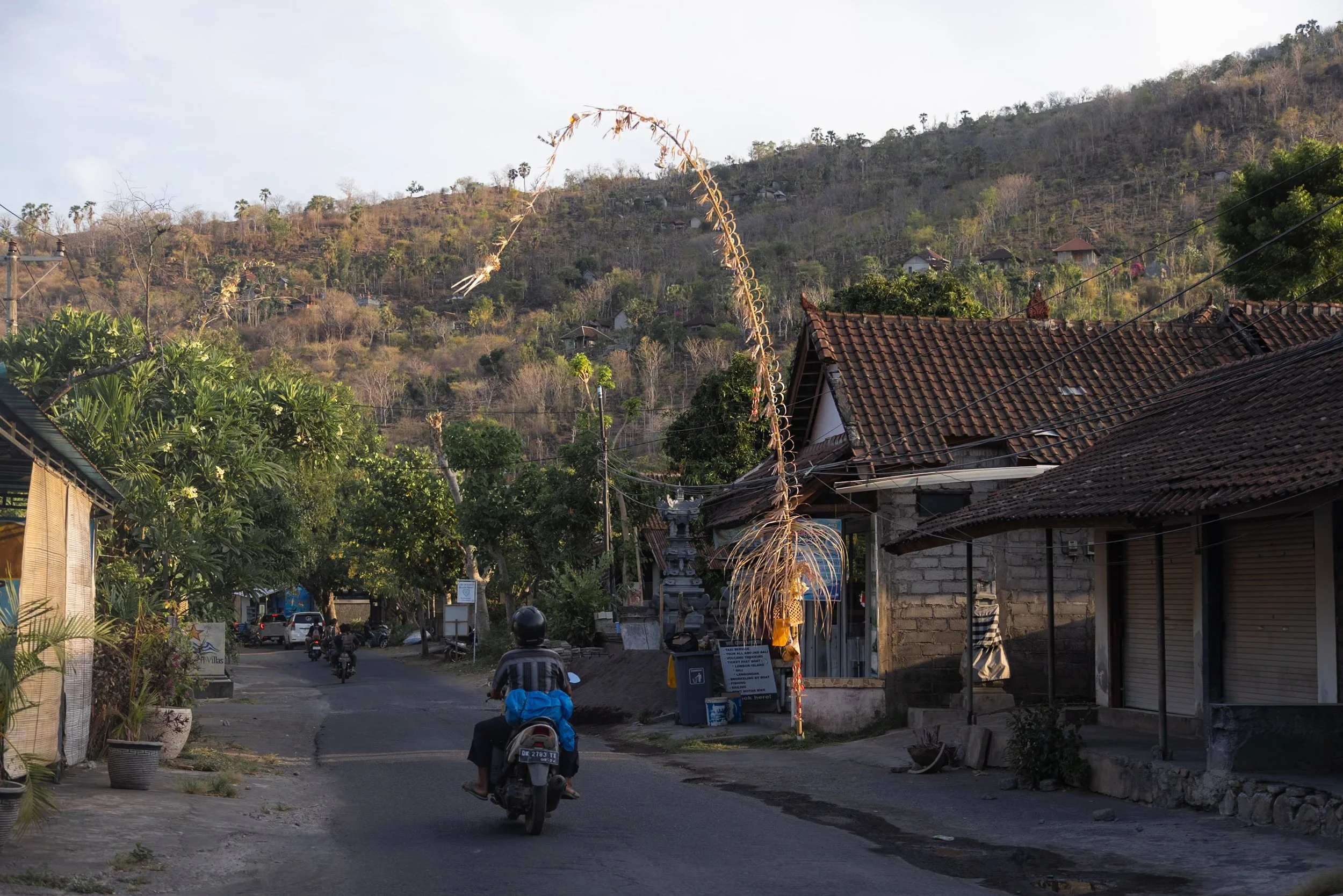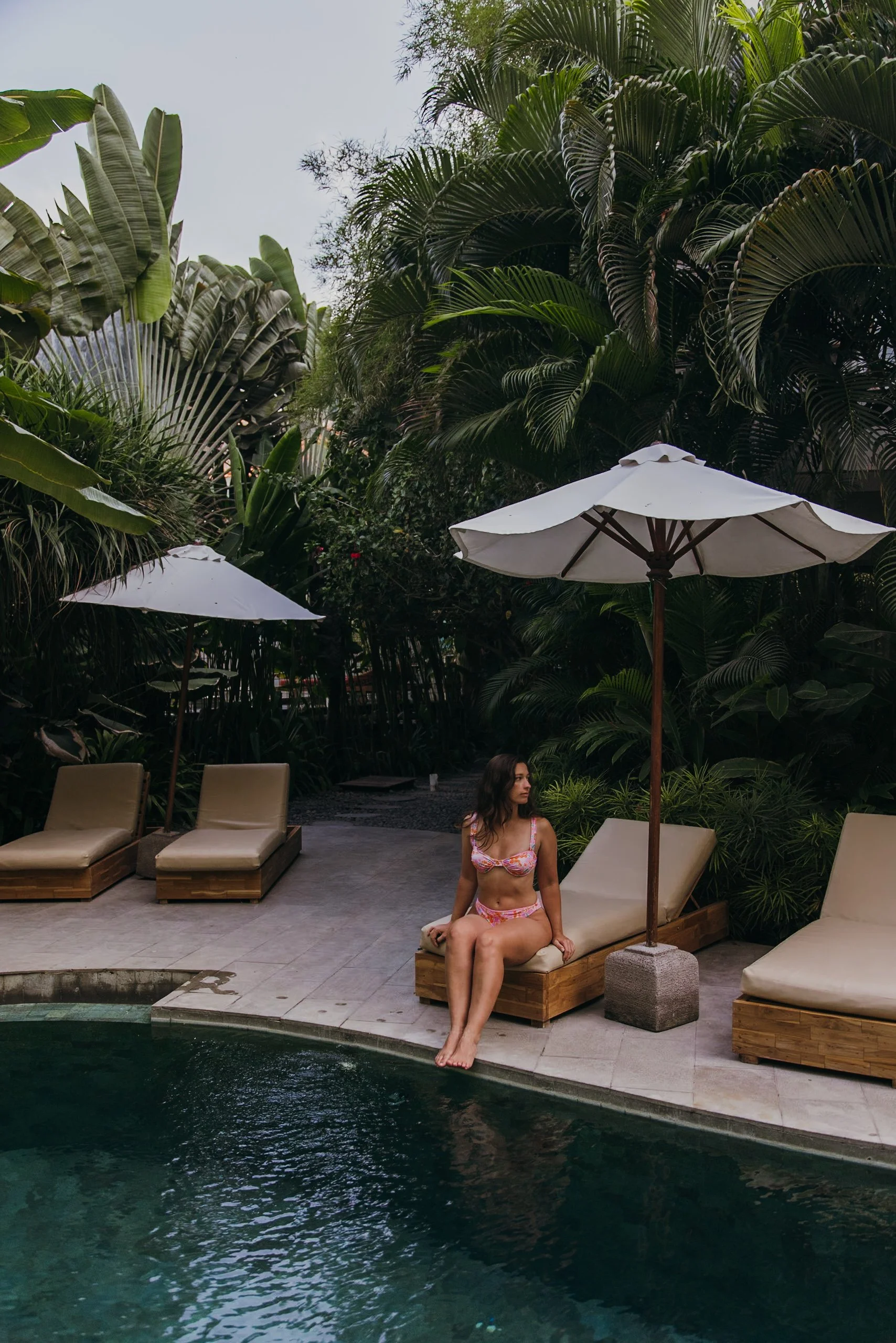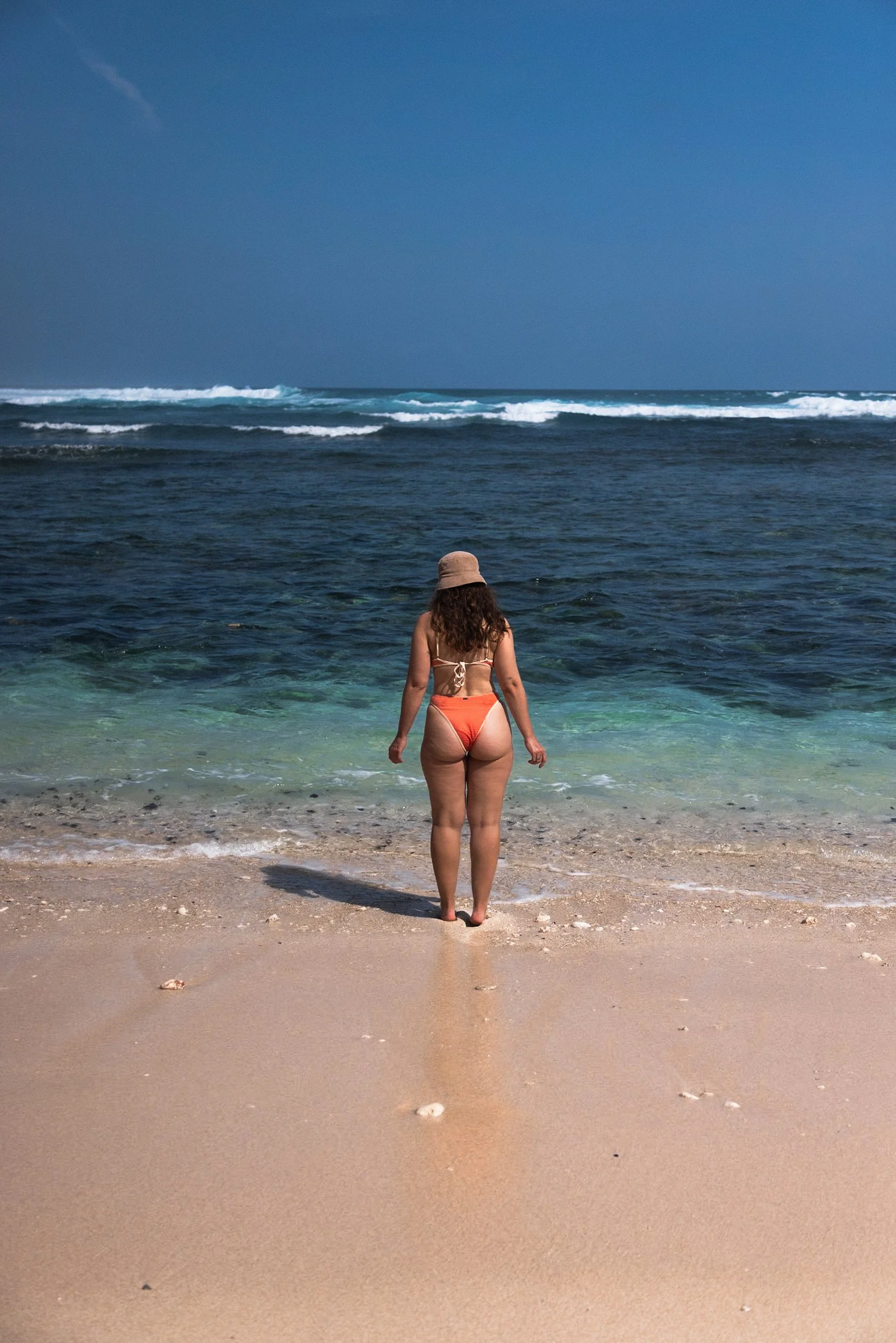This post may contain affiliate links, which means if you purchase through these links, we may receive a small commission at no cost to you. Thank you for supporting our website.
Bali, also known as the Island of the Gods, is a year-round destination with warm temperatures, vibrant culture and breathtaking scenery. The time of year you visit can shape your experience. From sunny beach days and world-class surf to tropical downpours and lush green landscapes, each month in Bali offers something unique.
The island has grown significantly in popularity since our first visit back in 2017, but it remains one of our favourite destinations. The warmth of the people, rich culture, stunning landscapes and relaxed island vibe keep us coming back again and again.
Whether you are planning a tropical escape, a surf adventure, a wellness retreat or a family holiday, this guide breaks down Bali’s seasons and weather month by month, helping you decide the best time to visit based on weather, crowds, prices and activities. We also share some of the best places to stay to help you plan the ultimate getaway to this tropical paradise.
Contents
How to Use This Guide
Use the contents table above to jump straight to the section you are most interested in. This guide breaks down Bali’s seasons and weather month by month, helping you decide the best time to visit Bali based on weather, crowds, prices and activities.
Whether you are looking for sunny beach days, ideal surfing conditions, quieter shoulder months or a peaceful rainy season retreat, this guide will help you choose the perfect time of year to plan your Bali adventure.
When is the Best Time to Visit Bali?
The best overall time to visit Bali is during the dry season (April to October). Days are sunny, humidity is lower and conditions are ideal for beaches, surfing, diving and exploring the island. You are also less likely to encounter mosquitos in the dry season, especially towards the end of October.
If you prefer fewer crowds and lower prices, the shoulder months of March, May, October and November are excellent options. These months offer warm weather, fewer tourists and good value for accommodation.
Bali’s wet season (November to March) brings warmer, more humid weather and short tropical downpours. It is also a peaceful and more affordable time to visit.
Our first trip to Bali was in December 2017, right in the middle of the wet season. To our surprise, it was much drier than expected, except during our time in Ubud where we experienced heavier rainfall. During the wet season, mosquitos are more prominent, so wearing insect repellent in the mornings and evenings is recommended.
Bali Seasons Overview
Bali has two main seasons rather than four: a dry season and a wet season. Temperatures are warm year round, ranging between 26 and 32 °C, with sea temperatures remaining comfortable for swimming throughout the year.
During the wet season, the temperature can feel significantly hotter due to increased humidity from the seasonal rains.
The activities you choose can also be influenced by the seasons. For example, during our recent visit at the end of the dry season in October, we went snorkelling in Amed and the conditions were fantastic with excellent visibility. In contrast, conditions in the wet season are not as favourable for snorkelling and diving, so it is worth planning your activities around the time of year you visit.
| Season | Months | Weather | Best For |
|---|---|---|---|
| Dry Season | April – October | Sunny, low humidity, occasional showers | Beach days, surfing, diving, festivals |
| Wet Season | November – March | Warm, humid, afternoon tropical rain | Fewer tourists, lush landscapes, cultural travel |
| Shoulder Months | March, May, October, November | Transitional weather, fewer crowds | Great value, quieter beaches, good conditions |
☀️ Dry Season is Bali’s most popular time. Expect blue skies, calm seas and vibrant social scenes in places like Canggu, Uluwatu and Seminyak.
🌧 Wet Season brings daily tropical showers, usually in the afternoon or evening. Mornings are often sunny. The island is at its greenest, rice terraces are vibrant and accommodation prices are usually lower.
You can find more seasonal travel tips and advice on the official Indonesian tourism website
Bali Month by Month
Here’s what to expect each month. These summaries will help you determine the best time to visit Bali based on weather, crowds and travel style. While Bali traditionally has a distinct dry season and rainy season, weather patterns have become less predictable in recent years.
The rainy season has sometimes arrived later than usual, which has shortened the dry season and brought more erratic, wetter conditions between March and July.
Both visitors and locals have noticed heavier storms during what is typically the dry period. Like all tropical climates, Bali’s weather can vary from year to year, but this month by month Bali weather guide gives you the clearest picture of what to expect when planning your trip.
January – Warm, Wet and Quiet
January falls in the middle of the wet season. Expect warm temperatures, heavy but short showers and lush landscapes. It’s a quiet time with lower prices, ideal for wellness retreats and cultural travel.
Weather: 26–30 °C, high humidity, daily afternoon rain
Crowds: Low
Good For: Spa retreats, temples, waterfalls, avoiding crowds
February – Wet Season Continues
February is similar to January with warm, humid conditions and regular rain showers. Travel costs are low and popular sites are less crowded.
Weather: 26–31 °C, afternoon downpours
Crowds: Low
Good For: Budget travel, nature at its greenest
March – Shoulder Season Begins
Rain starts to ease towards the end of March. This is a great time to visit before the dry season crowds arrive. Landscapes remain lush and prices are still lower than peak.
Weather: 26–31 °C, decreasing rainfall
Crowds: Low–medium
Good For: Quiet beaches, cultural travel, good value stays
April – Dry Season Starts
April is one of the best months to visit Bali. Days are sunny, humidity drops and the sea is calm. It’s excellent for surfing, diving and beach days without the peak season crowds.
Weather: 25–30 °C, low rainfall
Crowds: Medium
Good For: Surfing, diving, beach days, yoga retreats
May – Ideal Weather and Fewer Crowds
May is a sweet spot: dry season weather but before the June–August peak. Beaches are beautiful, surf conditions are excellent, and prices are still reasonable.
Weather: 25–30 °C, dry
Crowds: Medium
Good For: Outdoor activities, couples, photographers
June – Peak Season Begins
June brings perfect weather: clear skies, dry air and ideal surf. Crowds start to build as Europeans arrive for summer holidays.
Weather: 25–30 °C, very low rainfall
Crowds: High
Good For: Surfing, diving, festivals, beaches
July – Busy and Beautiful
July is peak season with the best weather and the busiest beaches. It’s perfect if you want lively energy and social scenes but book accommodation well in advance.
Weather: 25–31 °C, dry and sunny
Crowds: Very high
Good For: Surfing, beach clubs, festivals
August – Peak Dry Season
August offers postcard-perfect weather, ideal for outdoor adventures and cultural festivals. Prices are at their highest and popular areas are busy.
Weather: 25–31 °C, sunny and dry
Crowds: Very high
Good For: Beach lovers, families, first-time visitors
September – Fantastic Weather, Fewer Crowds
September is one of the best months to visit Bali. The weather remains excellent, seas are warm and clear, and the peak crowds start to thin.
Weather: 25–31 °C, dry
Crowds: Medium
Good For: Surfing, diving, exploring without crowds
October – Shoulder Season Returns
Our favourite time of the year to visit Bali, fewer crowds, queiter beaches and significantly less mosquitos as this is the last month of the dry season. There’s still plenty of sunshine, with the potential of rain showers appearing late in the month.
Weather: 25–31 °C, light rainfall late in month
Crowds: Medium–low
Good For: Good value travel, quieter beaches
November – Start of Wet Season
November marks the start of the wet season. Rain showers become more frequent but are usually short and intense. This is a great month for lower prices and greener scenery.
Weather: 26–32 °C, increasing rainfall
Crowds: Low
Good For: Budget travel, wellness, photography
December – Warm, Humid and Festive
December is hot and humid with daily tropical showers, but it’s also a lively time with Christmas and New Year festivities. Accommodation prices rise towards the holidays. Enjoy the sunny mornings, before the incredible tropical storms in the evening.
Weather: 26–32 °C, frequent rain
Crowds: High during Christmas/New Year
Good For: Festive travel, cultural experiences, surfing on the east coast
Crowds and Prices by Season
Depending on when you travel to Bali, the overall cost of your trip can vary significantly. Accommodation, flights and activities often change in price depending on the season. The table below gives you a clear overview of Bali prices by season, along with typical crowd levels and key travel notes to help you plan your trip.
| Season | Crowds | Prices | Notes |
|---|---|---|---|
| Dry (Apr–Oct) | High | High | Best weather, book early for June–Aug |
| Wet (Nov–Mar) | Low | Low | Lush scenery, daily showers, good value |
| Shoulder (Mar, May, Oct, Nov) | Medium | Medium–Low | Excellent balance of price and weather |
Where to stay in Bali?
Looking for the ideal place to stay? Use our interactive map below to find that perfect hotel, guest house or villa.
Best Time to Visit Bali for Different Travel Styles
Bali has just about everything you could want for the perfect adventure. From beautiful beaches and stylish coffee shops to world-class restaurants, luxury villas and boutique hotels, the island caters to every type of traveller. There are also endless activities to enjoy if you want a break from relaxing by the pool. Below, we outline the best seasons for popular activities in Bali, so you can plan your trip around the experiences you care about most.
For Surfing |
West coast breaks are best in dry season (Apr–Oct).
East coast is best in wet season (Nov–Mar).
For Diving |
Best visibility is in dry season, especially May–September.
For Cultural Travel |
Year round, but many festivals occur during dry season.
For Avoiding Crowds |
March, May, October and November offer good weather with fewer visitors.
For Wellness & Retreats |
Bali’s wellness scene thrives year round, but wet season offers peaceful surroundings and lower rates.
Practical Tips
Pack light clothing, a waterproof layer and reef-safe sunscreen.
Book accommodation early for peak months (June–August and Christmas).
Tropical rain showers are usually short; mornings often stay sunny even in wet season.
Bali remains warm year round, so there’s no true “bad time” to visit — just different experiences. It is best to pack some sort of light rain jacket in the wet season, especially if you plan on using a motorbike to explore the island.
Plan Your Bali Trip
Whether you’re chasing perfect surf, exploring temples, diving coral reefs or simply relaxing on the beach, the best time to visit Bali depends on the kind of trip you want.
Dry season is ideal for sunny adventures, while wet season rewards those looking for lower prices, lush scenery and a quieter pace. Shoulder months offer the best of both worlds.
Be sure to keep an eye out for future Bali travel guides coming soon!
Watch our Indonesia playlist
Plan your Bali adventure with our guides
Ultimate Amed Guide | Best Snorkelling Spot in East Bali
Lombok Travel Guide | Everything You Need to Know
The Secret Gilis in Lombok | Gili Asahan Island Guide
Surf and Stay at Boni Beach Hotel Lombok
Bali in December | Weather, Festive Events & Best Places to Visit
Lombok vs Bali | Which Indonesian Island Should You Visit?

